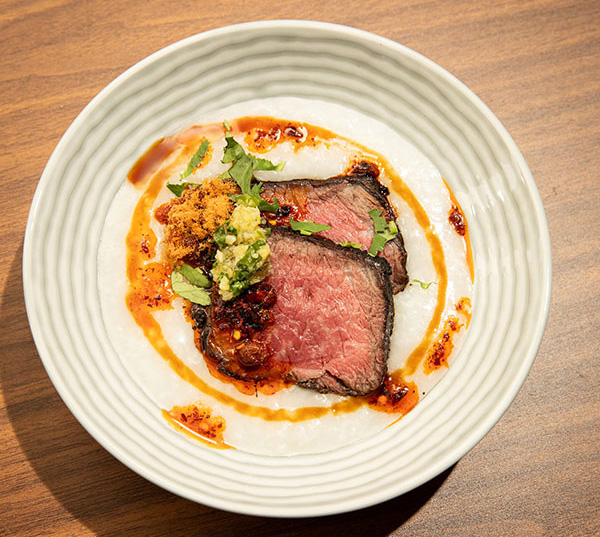As Wagyu grows in popularity here in North America, chefs are increasingly under pressure to know it, source it and serve it. We chatted up a couple of experts who have seen Wagyu production up close for a chef’s guide to the world of Wagyu. Adam Moore leads Flashpoint Innovation and is Aussie Beef & Lamb’s corporate chef here in North America. His fellow Aussie Beef Mate Alex Espinoza is Executive Chef at Bottega in Napa Valley.

What do you think is behind the rise in Wagyu on North American menus?
AM: “You go to foodservice for indulgence and Wagyu is exactly that. It’s an affordable luxury, a guarantee of great eating quality. Yes it costs more, but there’s really no risk. Social media drives it too - little luxuries are a chance to show off at the table, and to your feed.”
AE: “Especially with inflation, guests are looking for and expecting higher quality all the way around. Our private clients want the top wines, the top beef. Wagyu offers that “more than prime” experience.”
What did you take away from seeing Aussie Wagyu production up close?
AM: “In Australia there isn’t the corn and soy that dominates the feed market here in the US. So more flavorful grains like oats, barley, spent malts and native grasses are part of the ration, and it really makes a difference.”
AE: “First off the level of eating quality in Australia is f*cking mind blowing. It has a ton of beautiful natural flavor, beefy and meaty. Start-to-finish, the focus on the care of the animals was amazing. It’s intentionally a very low stress environment.”
Where should operators look to get into the Wagyu game?
AM: “Start in Queensland! Some of the best programs are in Australia – fullblood or purebred F4 genetics, the feed, and raising practices.”
AE: “Develop your relationship with your meat purveyor and ask a lot of questions about the Wagyu they can get — where does it come from? What are the genetics, the feed…good sources like Australia have all of that information, fully traceable and verified.”
What are the areas of opportunity for operators?
AM: “Use the chuck or chuck eye roll, top sirloin or culotte, or tri-tip. There’s more margin opportunity there, and those cuts are going to be delicious on the plate.”
AE: “I agree - I’d love to get my hands on some Wagyu brisket, or inside skirt. It all starts with asking for it!”
What about cooking and serving Wagyu?
AE: “Keep it as simple as possible, so your guest can taste and appreciate the natural flavor. That’s what they’re paying for!”
AM: “Because of the fat quality, Wagyu does eat lighter and doesn’t leave you with that heavy feeling, but I always recommend pairing Wagyu with something to clean the palate. Wine is obvious, but another beverage with acidity, or a nice citrus salad is perfect to cut through the fattiness.”
Yes please! Chefs, next time we see you, please cook us up some Aussie Wagyu! For a quick 101 guide to Wagyu grades and standards, we’ve put together a helpful resource here .

